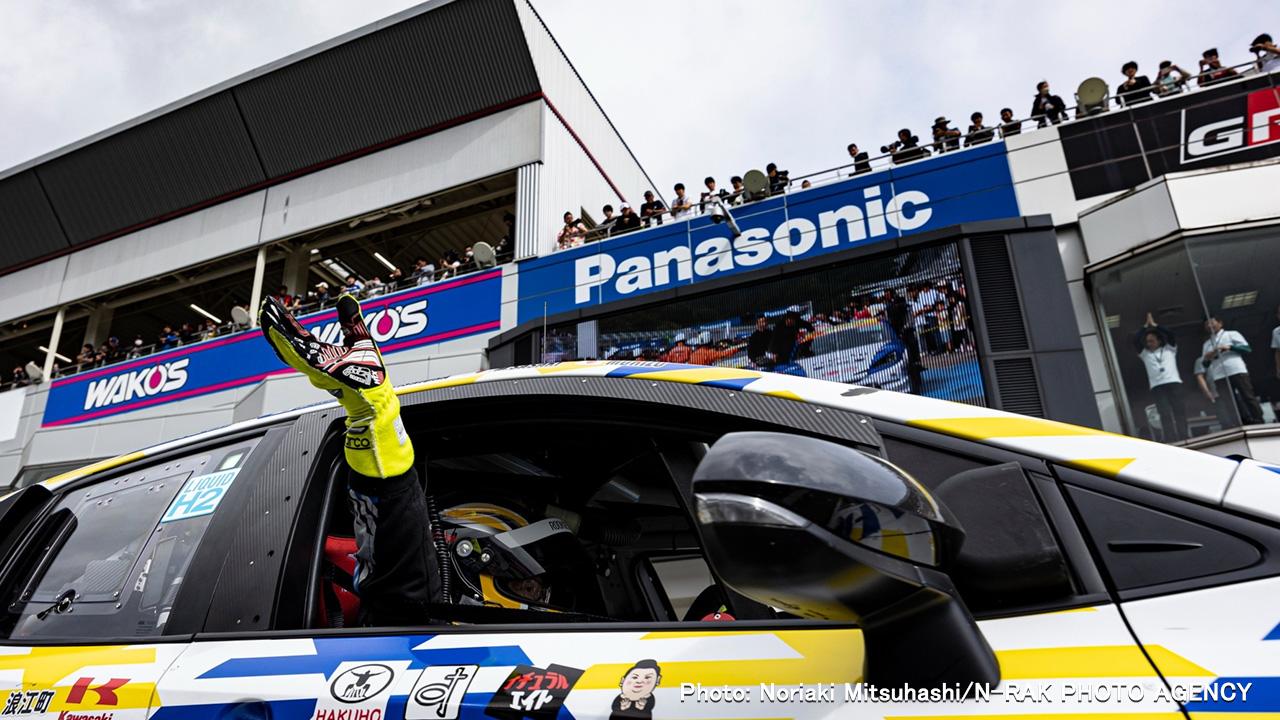
After just 18 months of development, Toyota's liquid hydrogen-fueled GR Corolla completed a 24-hour race. Toyota Times visited the genba to discover how this world-first endeavor succeeded.
Vehicle fire threatens to end development
The tank built by Shinko Industries was first installed in a car in October 2022. With the liquid hydrogen system thoroughly tested for function and safety, the car was ready to drive within the month.
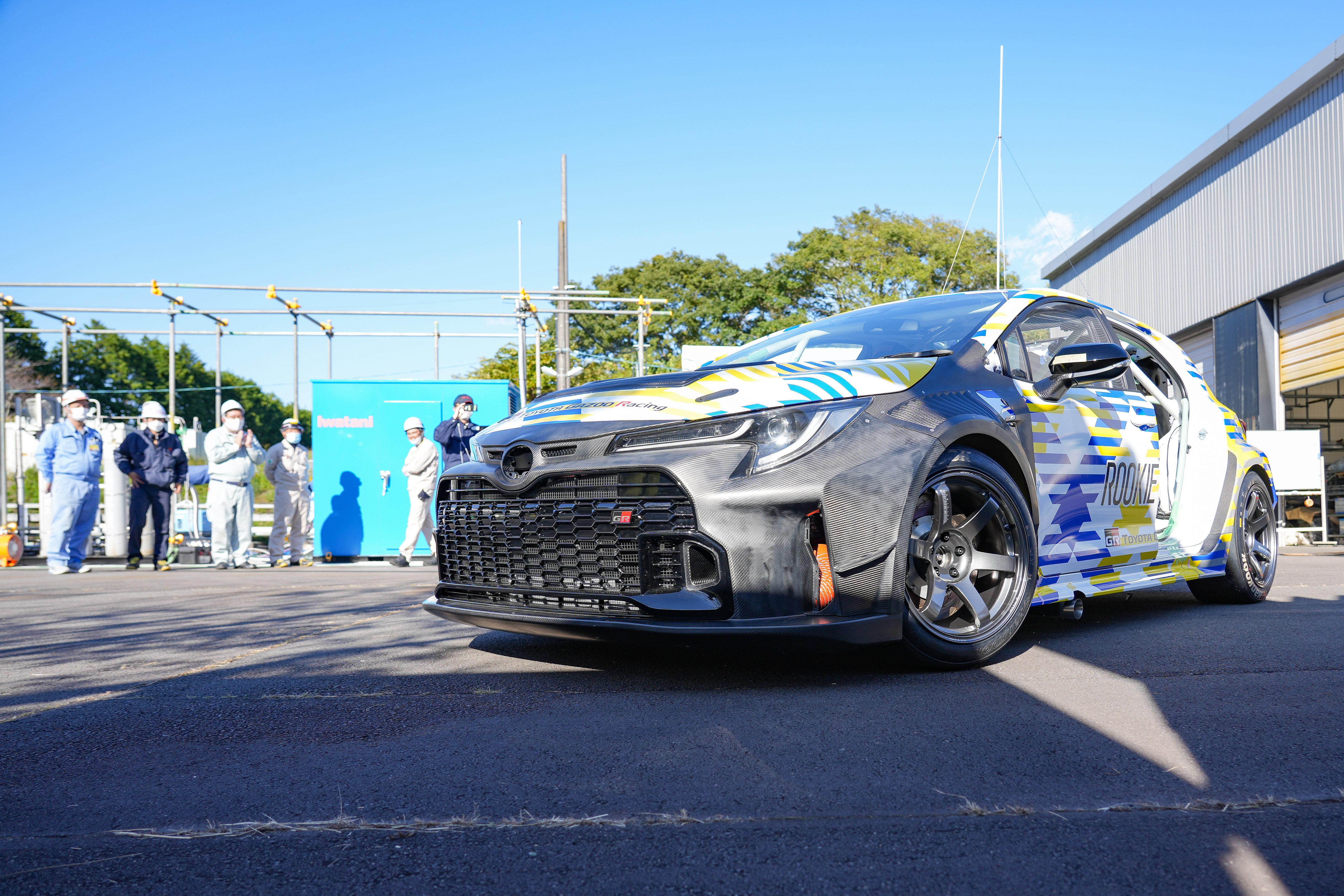
In November, the team made a successful first run at Fuji Speedway. Sights were set on the season opener at Suzuka in March 2023 as the car’s racing debut.
Yet failure is part and parcel of stepping into the unknown. Despite previously running trouble-free, time and again, the car would malfunction when conditions changed. Often, the causes could not be pinned down on the spot.
Though each day brought its fair share of problems, such issues were ironed out at the genba, and the project seemed to be making steady progress.
However, on March 8, just ten days out from the big race, a major incident occurred.
During a test run at the track, a fire ignited in the engine bay. Fortunately, none of the drivers or crew were injured, but damage to the vehicle forced the team to pull out of the season opener.
A missed race was the least of the team’s worries. “Such extreme attempts are not something we are allowed to do every day,” says Project General Manager Naoaki Ito, who oversees the hydrogen engine project. “Failure usually means you’re out of it completely.”
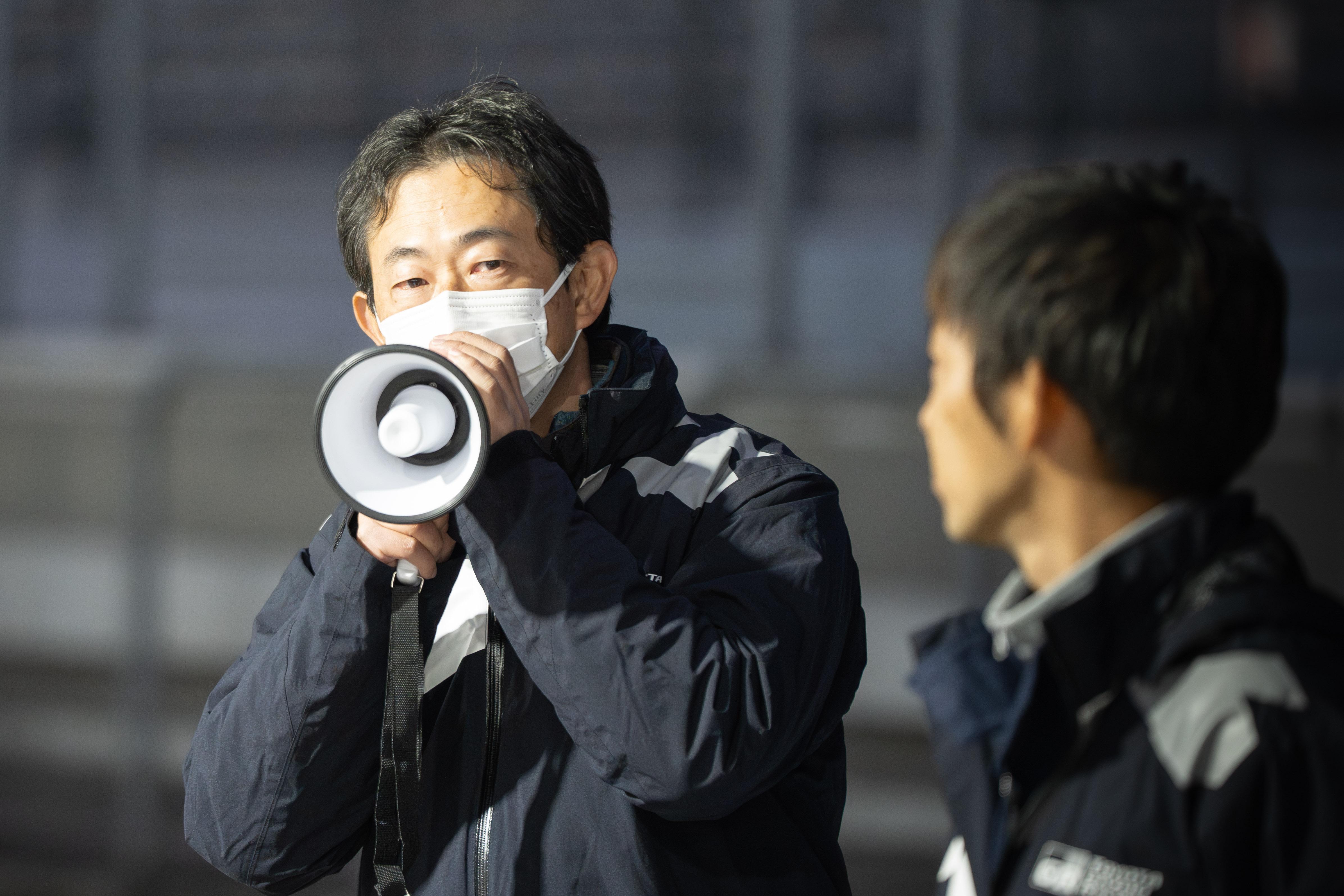
The development team feared that if the fire came to dominate the narrative, the project might well be terminated.
And yet, the work carried on. A week later, when announcing the team’s withdrawal from the race, both President Koji Sato and Chairman Akio Toyoda clarified their intention to forge ahead with development.
“This car competes in the ST-Q class, a category set up with the goal of developing technology that will play a part in creating our future mobility society. The purpose of such testing is to identify issues, and the key is figuring out how to build on the issues that emerge. We plan to keep moving forward with continuous improvement.” (President Sato)
“We undertook this effort to help create a hydrogen society. As we’ve said from the outset, the future will be shaped by acting with purpose and passion. Even while the engineers were saying it couldn’t be done, they’ve managed to develop the technology in an agile way while remaining competitive and keeping an eye on what’s going on around us. As a driver myself, I want people to see hydrogen not as a danger but as our future.” (Akio)
With the backing of Toyota’s leaders, the developers set their sights on the 24-hour race, the same event where the original H2 Corolla made its debut in 2021.
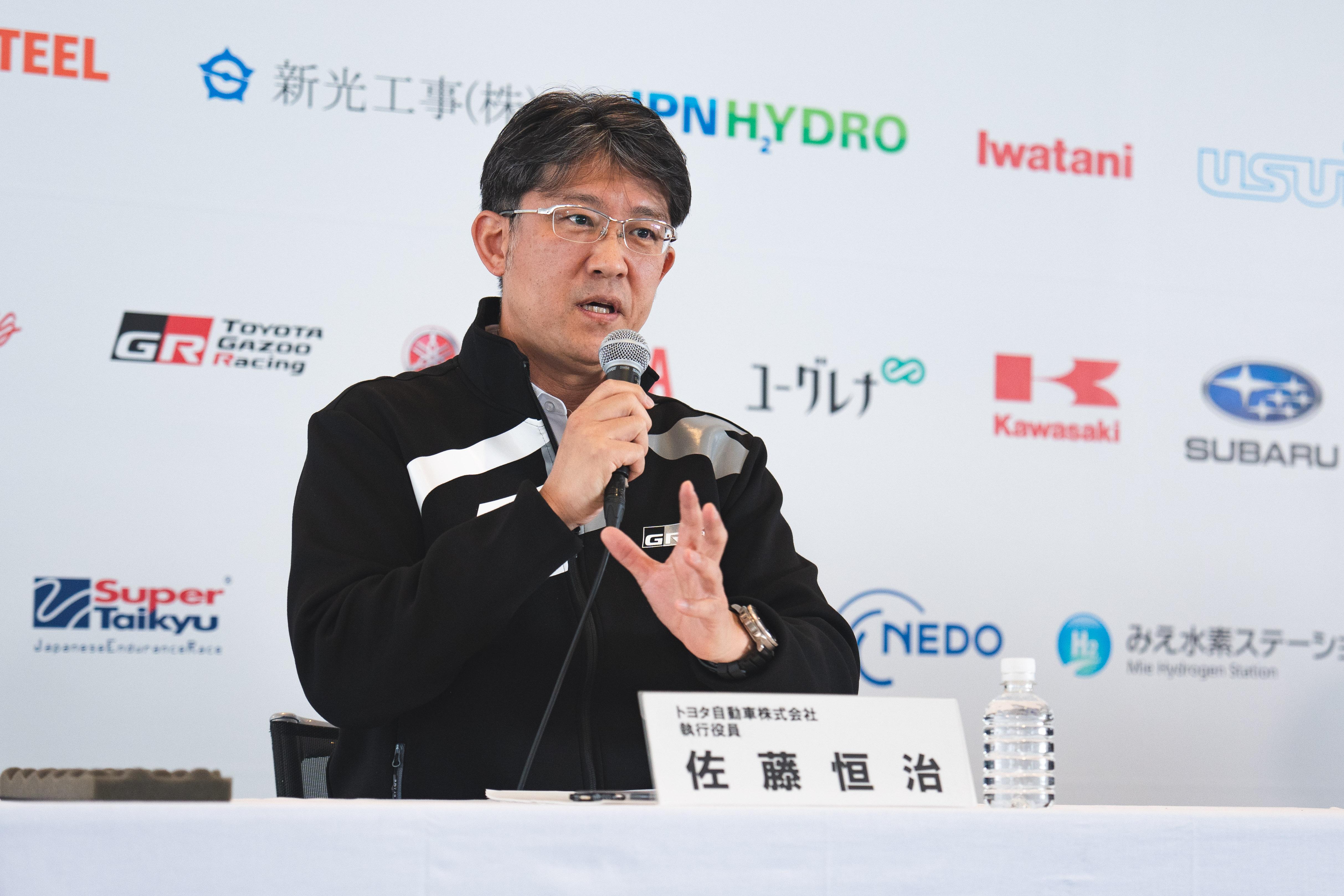
Improvement, not restoration
The team’s job was made harder by the fact that every part was a one-of-a-kind item. They now had two and a half months to order these parts and rebuild the vehicle from the “body-in-white” stage, meaning a bare skeleton without the engine, seats, or other components.
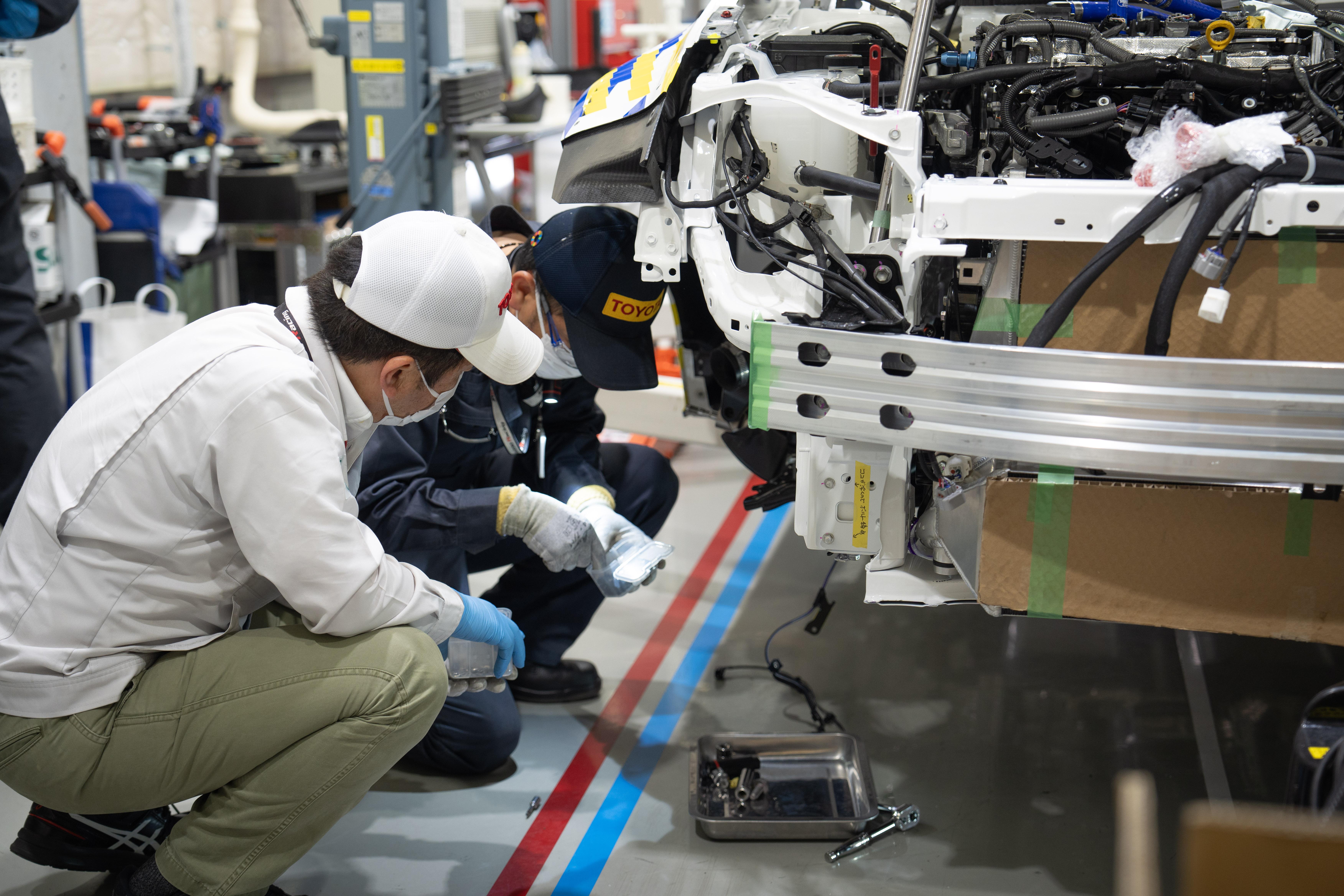
While such a schedule would normally have been impossible, the developers seized their second chance and poured all their efforts into crafting a new car.
What’s more, rather than simply restoring the vehicle to its former condition, they spent the time making improvements.
To prevent another fire, the hydrogen piping was shifted away from high-temperature areas in the engine, and mechanical fixes were implemented to ensure the joints did not loosen.
Additional safety measures included a cover to conduct hydrogen to the detector in case of a leak.
The team also managed to trim 50 of the roughly 300 kg that the vehicle had gained in switching from hydrogen gas, mainly by lightening the tank.
The lap times at Fuji Speedway even eclipsed those set by the original H2 Corolla in its first race.
Akio, aka Morizo, gave the slimmed-down vehicle a nod of approval after taking a spin, saying, “It felt much better than the first time. They made great progress in reducing weight, and I was able to have a proper dialogue with the car.”

